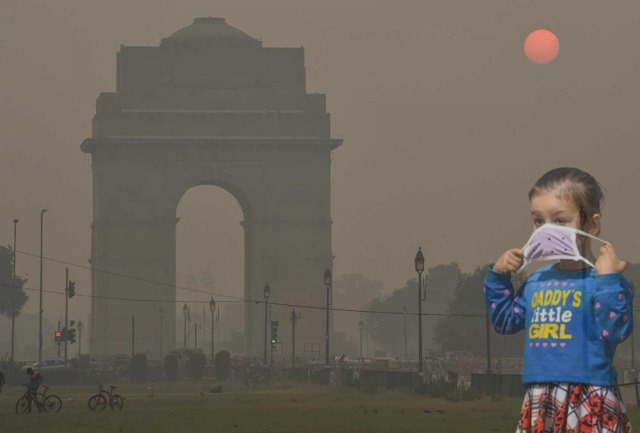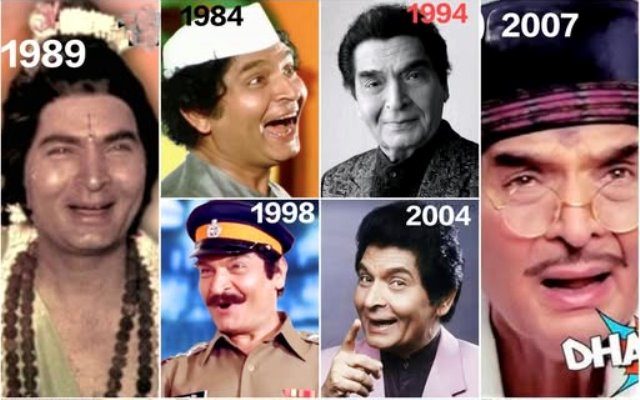
Of Life and Living in a Gas Chamber Called Delhi-NCR
It is a mild winter afternoon and I am meeting a friend at the DLF Golf and Country Club, a private members-only club in Gurugram. Widely acknowledged as the best golf course in India and a regular host to international tournaments, it is also a paradise for golf enthusiasts and a symbol of luxury and exclusivity in India. With an annual membership fee of around Rs 7 lakh (USD 8400) or 3.5 times the per capita income in India, it better be a paradise. We are sitting inside one of its glass-encased restaurants and the conversation turned to Delhi’s air pollution.
Through the glass we can barely see the carefully landscaped green lawns, undulating hills, and a manmade lake with a fountain because all of it was covered by a thick blanket of fog. Only, it was not fog but smog, or air that was polluted densely with tiny particulate matter that can get into your lungs when you breathe and lead to serious respiratory and other ailments. It is said that an average resident of Delhi-NCR (National Capital Region) inhales the equivalent of a pack and a half (or 30) cigarettes every day during the worst days of pollution. The worst days are now. And they are ubiquitous. Between October end and January, air pollution levels in the sprawling megalopolis, home to nearly 33 million people, which is about half the population of the UK, routinely turn horrific each year.
Air pollution is not a problem for Delhi and the NCR alone but has come to affect every large and medium sized city in India where construction activity is booming; the number of vehicles on the road is spiraling out of control; and where industrial activity in the form of smoke spewing factories mushroom as zoning restrictions are enforced only leniently. In northern parts of India, such as Delhi and the NCR, the problem is compounded by farmers burning crop stubble to clear the soil for fresh sowings and the smoke from that being swept over the city and its suburbs.
My friend tells me how all his three cars have air purifiers, which also, of course, are in every room of his sprawling five-bedroom home in a luxury condominium on the edge of the golf course where we are sitting. He coughs frequently, though, and when I ask him whether he wears a mask when he is outdoors, he demurs and doesn’t answer. He is one of India’s privileged class of rich people who lives his charmed life in a bubble but even he doesn’t seem overly concerned about the havoc that the air in the city is wreaking on his body and his health. It is believed that in Delhi and the NCR, pollution may be slashing 10 to 12 years of a person’s life.
As we finish our coffees and prepare to leave, I check the real time Air Quality Index (AQI) on my phone. It is 402. That means the air quality is very very poor and may cause respiratory illness in people on prolonged exposure. It also means that the average concentration of PM 2.5, a harmful pollutant, is 250 micrograms per cubic metre, which is four times the permissible limit. I take out my mask, a N95 that is said to help filter out the dreaded particles–at least a bit–and put it on for the walk to my friend’s car parked about 800 metres from where we are. He doesn’t have a mask and even though he is still coughing a bit, he doesn’t seem to care.
My friend is among the 17,400 dollar millionaires (estimate courtesy Hurun India Wealth Report, 2021) in Delhi and NCR. And as I said, he doesn’t wear a mask when he is outside. Little wonder that very few of the millions of his co-residents in the megalopolis also don’t. Most don’t own and cannot afford air purifiers and millions have to work outdoors all day or live in homes that are just not equipped to prevent the spread of poor air.
This November when air pollution levels in Delhi and the National Capital Region (NCR) reached alarming levels once again, a leading Indian newspaper did a feature titled, “Choosing the right mask for Delhi–your ultimate guide”. It was a timely article, exhaustive and well-researched, and listed different masks and their efficacies in tackling or, rather, lessening the grave consequences of breathing the urban sprawl’s terrible air. I am sure many other media publications have done the same thing: warning people about how bad the air quality is and how important it is to take precautions. They needn’t have. No one wears masks in Delhi or its adjoining areas that make up what is known as NCR.
This winter, Delhi and the NCR’s air quality was the worst in several years. On December 23, in parts of the city the AQI crossed 450. AQI values at or below 100 are generally thought of as satisfactory. When AQI values are above 100, air quality is considered to be unhealthy—at first for certain sensitive groups of people, then for everyone as AQI values increase. In Delhi and the NCR area, AQI levels during the colder months, beginning in November, routinely rise to beyond 400, which is not only unhealthy but hazardous and, for people breathing it over a sustained period, can have life-threatening consequences.
A decade ago, China’s Beijing (population around 22 million) had a similar problem. Thick smog stubbornly enveloped the city and AQI levels soared. But the Chinese government declared a war against pollution in 2013. In Beijing, a $100-billion plan was actioned, which included clampdowns on factories, a ban on old vehicles, and a decisive move from coal and fossil-fuel sources of energy to natural gas. In 2020, Beijing was reported to have had 288 days of clear skies compared to 176 in 2013 when the war against pollution began.
And in Delhi? In 2021, according to one estimate, there were only 60 satisfactory air days (AQI of 100 or less). Things may have gotten worse since then. And, on the face of it, not much is being done to effectively improve things.
One of the factors that made the Chinese government combat the pollution problem in its biggest cities was public outrage. Even under an authoritarian regime, people in Beijing and other cities protested publicly when air pollution began reaching hazardous levels. That and the fact that China was eager not to have its international image, particularly among investors, tarnished were what spurred the authorities into action.
In Indian cities, especially Delhi and the NCR, there has hardly been any public protest. Instead there is a pall of fatalism that seems to be pervasive. On the streets of Delhi, Gurugram, Noida, Faridabad, and other satellite towns, hardly anyone wears masks. And, while schools were closed briefly, and some offices reverted to Covid-era remote working for their employees, these were stop-gap measures.
To be sure, the government has rolled out a set of plans. GRAP, which stands for Graded Response Action Plan, is a set of emergency measures that are implemented incrementally when air quality begins to dip in Delhi-NCR in the winter months. GRAP has four stages, depending on the severity of the air pollution: poor, very poor, severe, and severe+. Each stage has different actions to reduce emissions from various sources, such as vehicles, industries, construction, and waste burning.
Has that helped? The short answer is no. That is because of several factors:
First, there is a lack of coordination and compliance among various agencies and states involved in implementing GRAP. Second, even after GRAP triggers actions such as a ban on construction, waste burning and diesel generators, these are not implemented by local authorities. Third, the response to changing air quality levels is delayed or insufficient. And fourth, there is a lack of a long-term plan to address the root causes of air pollution such as vehicular emissions, industrial activities, crop burning, and meteorological factors.
To be sure, there have been bans on certain categories of vehicles that don’t adhere to emission standards. There have also been some restrictions on factories and smoke-spewing industries in and around the megalopolis but clearly not enough has been done to have a meaningful impact on the quality of air that millions have to breathe.
Soon, India’s political parties will begin their run-up to the parliamentary elections scheduled for next May. The Prime Minister Narendra Modi, who will lead the campaign for the ruling Bharatiya Janata Party, is keenly expected to win a third term. By February or perhaps March when electioneering will really pick up momentum, the skies will be a bit clearer (read: AQI levels will no longer be hazardous but merely poor) and that would be good enough for everyone to forget about pollution. The issue of bad air quality, which has already become “old news” that is undeserving of highlighting for India’s media publications will by then disappear completely from their news reports; and you can be sure that air pollution will not be an issue that anyone is going to focus on during the high-decibel election campaigning that usually marks India’s polls.
Instead, the citizens of Delhi-NCR (as well as other Indian cities) will fatalistically breathe “poor” or “very poor” air, thankful perhaps that at least it is not hazardous… till the smog rolls in again next November.
For more details visit us: https://lokmarg.com/



